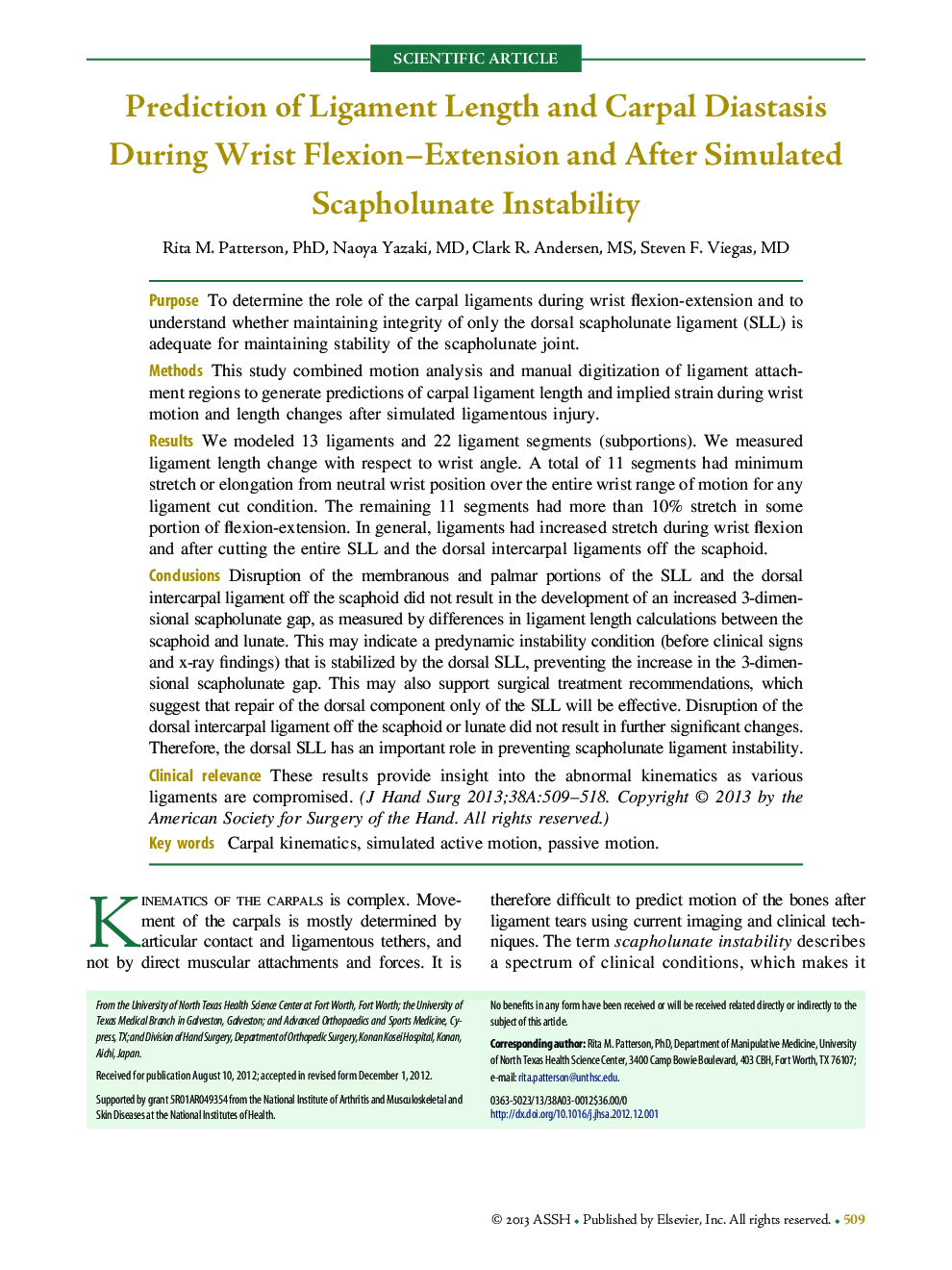| Article ID | Journal | Published Year | Pages | File Type |
|---|---|---|---|---|
| 4069571 | The Journal of Hand Surgery | 2013 | 10 Pages |
PurposeTo determine the role of the carpal ligaments during wrist flexion-extension and to understand whether maintaining integrity of only the dorsal scapholunate ligament (SLL) is adequate for maintaining stability of the scapholunate joint.MethodsThis study combined motion analysis and manual digitization of ligament attachment regions to generate predictions of carpal ligament length and implied strain during wrist motion and length changes after simulated ligamentous injury.ResultsWe modeled 13 ligaments and 22 ligament segments (subportions). We measured ligament length change with respect to wrist angle. A total of 11 segments had minimum stretch or elongation from neutral wrist position over the entire wrist range of motion for any ligament cut condition. The remaining 11 segments had more than 10% stretch in some portion of flexion-extension. In general, ligaments had increased stretch during wrist flexion and after cutting the entire SLL and the dorsal intercarpal ligaments off the scaphoid.ConclusionsDisruption of the membranous and palmar portions of the SLL and the dorsal intercarpal ligament off the scaphoid did not result in the development of an increased 3-dimensional scapholunate gap, as measured by differences in ligament length calculations between the scaphoid and lunate. This may indicate a predynamic instability condition (before clinical signs and x-ray findings) that is stabilized by the dorsal SLL, preventing the increase in the 3-dimensional scapholunate gap. This may also support surgical treatment recommendations, which suggest that repair of the dorsal component only of the SLL will be effective. Disruption of the dorsal intercarpal ligament off the scaphoid or lunate did not result in further significant changes. Therefore, the dorsal SLL has an important role in preventing scapholunate ligament instability.Clinical relevanceThese results provide insight into the abnormal kinematics as various ligaments are compromised.
